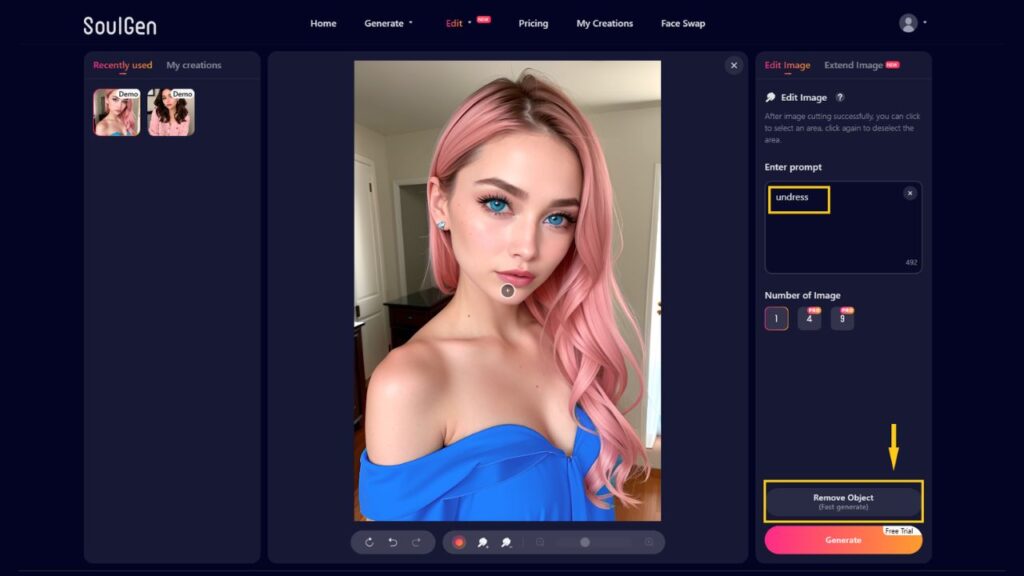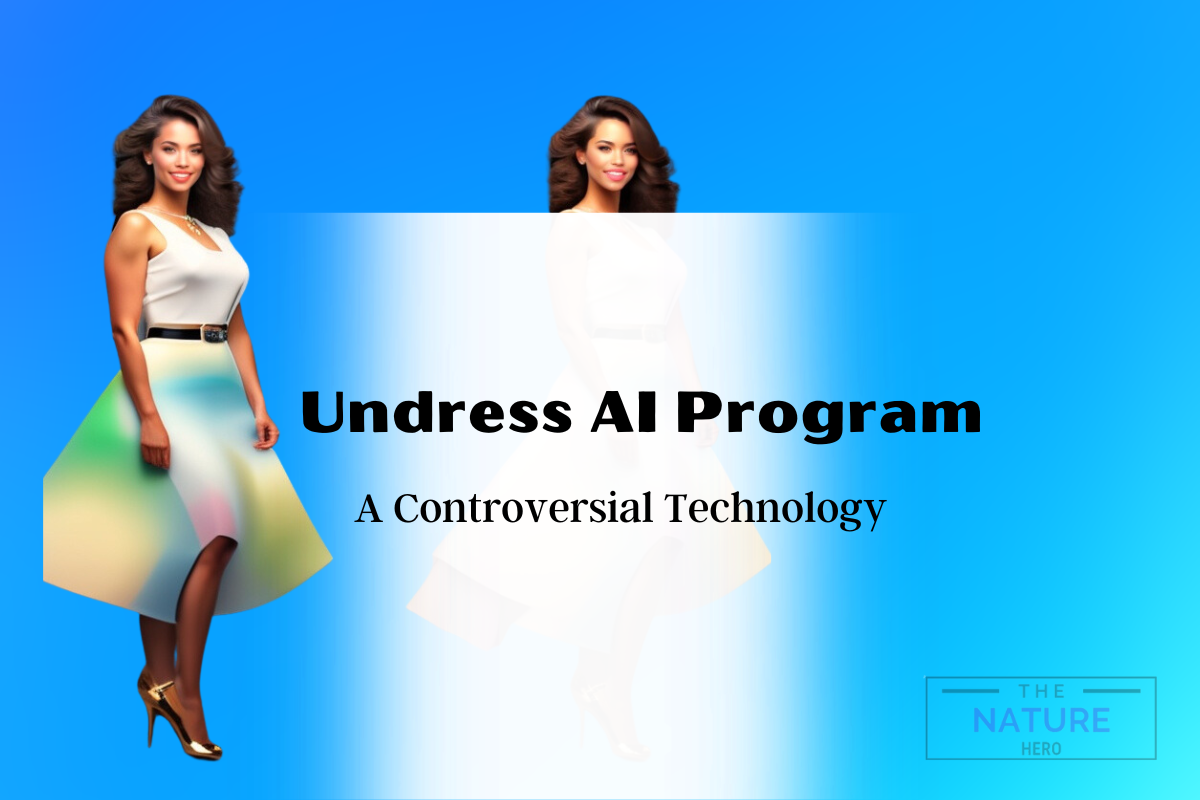Is the pursuit of technological advancement blurring the lines between innovation and exploitation? The emergence of AI-powered tools capable of digitally undressing individuals represents a significant ethical challenge that demands immediate and careful consideration.
The digital landscape is rapidly evolving, and with it, the capabilities of artificial intelligence. We're seeing an exponential increase in tools that utilize AI to manipulate images, including those designed to remove clothing from photographs. While some of these tools may be presented as harmless novelties or aids for artistic expression, the potential for misuse is substantial and carries grave implications.
The following table provides a brief overview of some of the applications and associated concerns within this rapidly evolving technological space. While we are not referencing an individual in particular for this overview, the core issues and technologies discussed are crucial to understanding the broader implications.
- Dairy Queen Blizzard Of The Month Flavor Of The Season
- Is Morgan Returning To General Hospital Latest Updates
| Application/Tool | Description | Key Features | Ethical Concerns | Potential Misuse |
|---|---|---|---|---|
| AI-Powered "Undressing" Tools | Software utilizing artificial intelligence to remove clothing from images. | Image upload and processing, automated clothing removal, potential for customization (e.g., body modifications), user-friendly interfaces. | Invasion of privacy, non-consensual image manipulation, potential for harassment and blackmail, deepfake creation, and the spread of harmful content. | Generating explicit images of individuals without their consent, creating fake nudes for malicious purposes, spreading misinformation, and enabling online harassment. |
| "Undress VIP" | A platform reportedly offering a free AI service for undressing photos. | Claimed free service, potential for ease of use. | Similar ethical concerns as other undressing tools, especially regarding privacy and non-consensual image creation. | Targeting individuals for exploitation through the creation and distribution of explicit images. |
| Slazzer 3.0 | An AI tool designed for removing clothing from images. | Image processing capabilities and automation to enhance removal functionality. | Potential for misuse and ethical concerns regarding unauthorized image manipulation, especially within the context of non-consensual activity. | Facilitating the creation and distribution of harmful content. |
| "Undress AI Tool" | A tool designed to remove clothing, often advertised as a "deepnude" app. | Seamless undressing using a powerful photo manipulation tool. | Ethical issues related to privacy violation and potential for malicious usage. | Undermining individuals' right to privacy and facilitating non-consensual activities. |
| "Undressher" | An AI-powered web application that allows users to digitally undress individuals in photos. | Advanced AI technology to create realistic image manipulations, options for customization like boob and ass size, and cloth type adjustment. | Risk of privacy violations, potential for non-consensual creation of explicit images, and the spread of harmful content. | Generating explicit content for malicious purposes and enabling online harassment and shaming. |
| "Unclothy" | AI tools for automatically detecting and removing clothing from images. | Leveraging advanced AI models to generate "deepnude" images. | Ethical concerns regarding the generation of non-consensual explicit content. | The ability to create and distribute deepfakes, potentially leading to the spread of misinformation and causing significant harm to the individuals involved. |
| AI Clothes Remover | AI tools for the removal or alteration of clothing in images. | Image upload functionality, selection tools for identifying clothing to be removed, automated image editing. | Ethical implications including privacy violation, non-consensual image creation, and the potential for exploitation and harm. | Enabling the generation and dissemination of explicit content and deepfakes. |
The widespread availability of tools like "Undressher" and "Unclothy," which leverage advanced AI models, raises serious questions about consent, privacy, and the potential for misuse. The ability to upload images and automatically generate "deepnude" versions poses a clear and present danger. The applications are growing in popularity, as mentioned in multiple sources, and these tools are rapidly gaining traction, with millions of users accessing these types of services each month.
The core function of these applications revolves around removing clothing, or altering it, from existing images. The very nature of these functions inherently raises the concern of invasion of privacy, especially when unauthorized images of real people are involved. Furthermore, the creation and spread of non-consensual explicit content is a significant ethical issue.
The underlying technology fueling these applications relies on sophisticated artificial intelligence, allowing for rapid and often remarkably realistic image manipulations. The use of these AI models is constantly improving, creating more and more realistic results, which, in turn, amplifies the potential for harm. This presents a challenge not only to the individuals whose images are manipulated but also to the broader fabric of trust and safety online.
- Burt Reynoldss Greatest Films Mustsee Classics More
- Deon Cole Chicagos Leading Expert In Relevant Field
The term "undress" itself, defined simply as "to remove the clothes or covering of," takes on a sinister connotation in this context. This is because it becomes intertwined with the potential for malicious acts. For example, tools are described as having features like options for customization such as adjusting breast or butt size. Even when a tool attempts to offer what might be considered harmless fun, it can be easily misapplied.
One has to ask, if a tool can generate deepfakes, what is the likelihood of it being applied in that manner? As it's been widely reported, these applications are used by people to create intimate content. The goal is to share those photos, and in those cases, the people in the photos are often unaware that they are being digitally violated. In the context of a photo, such alterations can be deployed to facilitate harassment, blackmail, and online shaming. These are just a few of the devastating potential consequences.
The ethical concerns are magnified when one considers the potential for misuse, and it's important to note how the availability of these tools can directly contribute to harm. The tools are built on AI and are able to produce photos that can potentially be used to spread misinformation, cause online harassment, and contribute to non-consensual sharing of explicit content.
Consider the rapid advancements in AI and how they are changing the ways in which images are produced. AI-powered image generators can now render unique images based on user-provided prompts that can range from simple character descriptions to detailed requests involving body types, poses, and clothing alterations. The same technology that creates images from scratch can be used to alter them in ways that are often indistinguishable from reality.
Furthermore, the accessibility of these tools poses a significant threat. They can be found readily available on the internet. This level of accessibility, combined with the ease of use, further widens the scope of potential damage. As researchers have reported, apps and websites that use artificial intelligence to undress individuals in photos are rapidly growing in popularity. This widespread availability, in turn, amplifies the potential for harm.
The use of such technology, particularly when paired with the lack of proper safeguards, represents a serious threat to individual privacy. The potential for the creation of explicit content without consent poses a significant risk. This has the potential to have lasting and devastating consequences, not only for the individual whose image is manipulated but also for society at large.
The ethical considerations surrounding these tools are far-reaching and complex. The very nature of this technology brings with it a number of ethical questions, and it forces a society-wide reckoning on the nature of consent and image manipulation.
In conclusion, the increasing sophistication and accessibility of AI-powered "undressing" tools present a formidable challenge. It's imperative that we foster awareness, promote ethical development and usage, and establish robust safeguards to protect against the potential harms. Ignoring the implications of these tools will not make the problem disappear.


